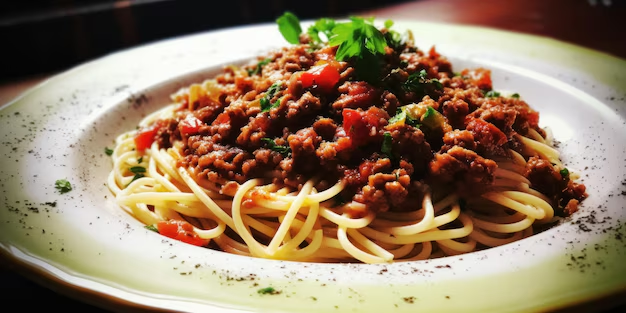Greek spaghetti is a delightful fusion of Mediterranean flavors and classic Italian pasta, bringing together the best of both culinary worlds. This dish typically features ingredients like olive oil, feta cheese, olives, and fresh herbs, creating a flavorful and vibrant meal that’s perfect for any occasion. Whether you’re a fan of traditional Greek cuisine or simply looking for a new way to enjoy pasta, Greek spaghetti offers a refreshing and nutritious option that’s both satisfying and easy to prepare.
The appeal of Greek spaghetti lies in its simplicity and the use of fresh, high-quality ingredients. The combination of tangy feta, briny olives, and aromatic herbs with perfectly cooked spaghetti creates a dish that’s both light and flavorful, making it an excellent choice for a quick weeknight dinner or a special weekend meal. If you’re interested in exploring more Mediterranean-inspired recipes, you might also enjoy dishes like Spinach Chicken Mushroom Lasagna or Garlic Bread Steak Bites.
Ingredients for Greek Spaghetti
Essential Ingredients for Authentic Greek Spaghetti
To create the perfect Greek spaghetti, you’ll need a selection of fresh, high-quality ingredients that embody the flavors of the Mediterranean:
- Spaghetti: Choose high-quality durum wheat spaghetti for the best texture and flavor.
- Feta Cheese: Opt for authentic Greek feta, which offers a tangy and creamy flavor that complements the other ingredients.
- Olives: Kalamata olives are a classic choice, adding a briny and rich taste to the dish.
- Tomatoes: Fresh, ripe tomatoes provide a juicy sweetness that balances the saltiness of the olives and feta.
- Garlic: Adds depth and aromatic flavor to the dish.
- Extra-Virgin Olive Oil: Use the best quality olive oil you can find, as it’s a key ingredient that ties all the flavors together.
- Fresh Herbs: Basil, oregano, and parsley are traditional choices that enhance the Mediterranean flavor profile.
For those who enjoy adding a personal touch to their dishes, consider incorporating additional ingredients like capers, grilled chicken, or shrimp to elevate the meal even further.
Preparing Greek Spaghetti
Step-by-Step Preparation Guide
- Cook the Spaghetti
- Begin by bringing a large pot of salted water to a boil. Add the spaghetti and cook according to the package instructions until al dente. Drain and set aside, reserving a cup of pasta water.
- Prepare the Sauce
- In a large skillet, heat the extra-virgin olive oil over medium heat. Add the minced garlic and sauté until fragrant, being careful not to burn it.
- Add the chopped tomatoes and cook until they start to break down and release their juices. Season with salt, pepper, and a pinch of oregano.
- Combine the Ingredients
- Add the cooked spaghetti to the skillet, tossing it with the tomato and garlic mixture. If the pasta seems dry, add a bit of the reserved pasta water to loosen the sauce.
- Stir in the crumbled feta cheese, sliced olives, and any additional ingredients like capers or grilled chicken. Toss everything together until well combined.
- Serve and Enjoy
- Transfer the Greek spaghetti to serving plates and garnish with fresh herbs like basil or parsley. Drizzle with a bit more olive oil and a sprinkle of feta for an extra burst of flavor.
- Serve the dish with a side of Greek Salad or Honey Butter Skillet Corn for a complete Mediterranean-inspired meal.
For more tips on perfecting your pasta dishes, check out Serious Eats’ Greek Pasta Salad Recipe.
Recipe Variations and Customizations: Greek Spaghetti
Classic Greek Spaghetti Recipe
The traditional Greek spaghetti is a simple yet flavorful dish that highlights the freshness of its ingredients:
- Ingredients: Spaghetti, feta cheese, Kalamata olives, tomatoes, garlic, extra-virgin olive oil, fresh herbs.
- Instructions: Follow the basic preparation steps outlined above, focusing on achieving the perfect balance of flavors with these essential ingredients.
This classic version is perfect for those who appreciate the authentic taste of Mediterranean cuisine.
Greek Spaghetti with Grilled Chicken
For a heartier meal, add grilled chicken to your Greek spaghetti:
- Ingredients: Spaghetti, feta cheese, Kalamata olives, tomatoes, garlic, grilled chicken, extra-virgin olive oil, fresh herbs.
- Instructions: Prepare the dish as usual, adding sliced grilled chicken to the pasta before tossing everything together.
This variation is ideal for those who want a more protein-packed version of the dish.
Vegan Greek Spaghetti
Create a vegan version of Greek spaghetti by using plant-based alternatives:
- Ingredients: Spaghetti, vegan feta cheese, Kalamata olives, tomatoes, garlic, extra-virgin olive oil, fresh herbs.
- Instructions: Substitute the traditional feta cheese with a vegan option and follow the same preparation steps.
This version retains the authentic flavors while accommodating a plant-based diet.
Serving Suggestions and Pairings: Greek Spaghetti
Ideal Side Dishes for Greek Spaghetti
To complement the flavors of Greek spaghetti, consider serving these side dishes:
- Greek Salad: A fresh and tangy salad with cucumbers, tomatoes, onions, and feta cheese.
- Tzatziki: A creamy cucumber and yogurt dip that pairs well with the pasta.
- Pita Bread: Warm, soft pita bread is perfect for soaking up any extra sauce.
For a more robust meal, you might also enjoy pairing the spaghetti with Dollywood Cinnamon Bread, which adds a sweet contrast to the savory pasta.
Beverage Pairings
Pair your Greek spaghetti with a refreshing drink:
- White Wine: A crisp Assyrtiko or Sauvignon Blanc pairs beautifully with the tangy and salty flavors of the dish.
- Sparkling Water with Lemon: For a non-alcoholic option, sparkling water with a slice of lemon is light and refreshing.
- Iced Tea with Mint: Adds a cooling element that complements the Mediterranean flavors.
For more ideas on pairing your meal with the perfect drink, visit Bon Appétit’s Greek Spaghetti with Tomatoes and Feta.
Presentation Tips
When serving Greek spaghetti, presentation can make the dish even more appealing:
- Plating: Use large, shallow bowls to showcase the vibrant colors of the ingredients.
- Garnishing: Top the dish with a sprinkle of fresh herbs, a drizzle of olive oil, and a few extra crumbles of feta cheese for a professional touch.
Common Mistakes and How to Avoid Them
Overcooking the Pasta
To avoid mushy pasta, always cook the spaghetti al dente:
- Use Plenty of Water: Boil the pasta in a large pot with plenty of salted water to prevent sticking and ensure even cooking.
- Check Early: Start tasting the pasta a minute or two before the recommended cooking time to avoid overcooking.
Balancing Flavors
Achieving the right balance of flavors is crucial for Greek spaghetti:
- Don’t Overdo the Salt: Feta and olives are already salty, so be cautious with additional seasoning.
- Add Fresh Herbs Last: To preserve their flavor and color, add fresh herbs just before serving.
Using the Right Olive Oil
The quality of olive oil can make or break this dish:
- Choose Extra-Virgin Olive Oil: It offers the best flavor and health benefits.
- Store Properly: Keep your olive oil in a cool, dark place to prevent it from becoming rancid.
Preventing Soggy Ingredients
To maintain the texture of the ingredients, add them at the right time:
- Add Tomatoes Last: To prevent them from becoming too soft, add the tomatoes just before serving.
- Drain Olives Well: Ensure the olives are well-drained to avoid making the dish too oily.
Frequently Asked Questions (FAQs)
What Makes Greek Spaghetti Different from Other Pasta Dishes?
Greek spaghetti stands out due to its use of Mediterranean ingredients like feta cheese, Kalamata olives, and extra-virgin olive oil, which give it a distinct flavor profile compared to traditional Italian pasta dishes.
Can You Make Greek Spaghetti in Advance?
Yes, Greek spaghetti can be made in advance. Prepare the dish as directed, then cool it completely before storing it in an airtight container in the refrigerator. Reheat gently on the stovetop, adding a splash of olive oil or pasta water to restore the sauce’s consistency.
How Do You Reheat Greek Spaghetti?
To reheat Greek spaghetti, place it in a skillet over low heat, stirring frequently until heated through. Adding a bit of olive oil can help refresh the flavors and prevent the pasta from drying out.
What Proteins Can You Add to Greek Spaghetti?
While Greek spaghetti is often enjoyed as a vegetarian dish, you can add proteins like grilled chicken, shrimp, or even tofu for a more filling meal. Each of these options complements the Mediterranean flavors beautifully.
What is the name of Greek pasta?
Greek pasta is often called “Hilopites,” which are flat, square noodles. Another popular type is “Orzo,” which is small and rice-shaped.
Is spaghetti Greek or Italian?
Spaghetti is Italian. It originated in Italy and is a staple of Italian cuisine.
What is the history of Greek spaghetti?
Greek spaghetti combines traditional Italian pasta with Mediterranean flavors like olive oil, feta, and olives, reflecting Greece’s rich culinary heritage.
What is tiny Greek pasta called?
Tiny Greek pasta is called “Orzo.” It resembles rice but is a type of pasta commonly used in Greek dishes.
Conclusion
Greek spaghetti is a versatile and flavorful dish that brings the fresh, vibrant flavors of the Mediterranean to your table. Whether you stick to the classic recipe or experiment with variations like adding grilled chicken or making a vegan version, this dish is sure to become a favorite in your household. The combination of tangy feta, briny olives, and fresh herbs with perfectly cooked spaghetti creates a meal that’s both satisfying and healthy.
For more delicious Mediterranean-inspired recipes, explore the extensive collection on Alison Recipes. From Beef and Noodles Crock Pot to Super Crunch Salad, there’s something for every taste. Happy cooking!

